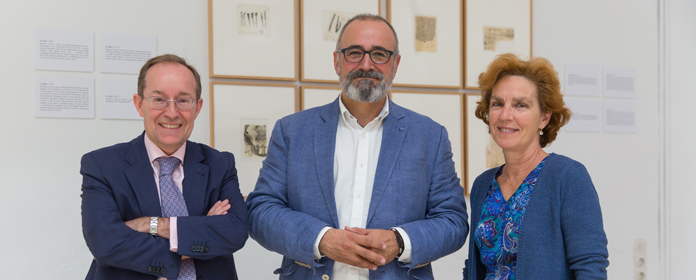"The beauty of the brain": 36 engravings by Santiago Ramón y Cajal on neurons come to Navarra for the first time.
The Science Museum of the University of Navarra exhibits until the end of June an exhibition of drawings by the Nobel Prize winner in Medicine, a native of Petilla de Aragón.

PHOTO: Manuel Castells
The exhibition The beauty of the brain: the drawings of Santiago Ramón y Cajal arrives for the first time in Navarra, after two years of being exhibited in different centers in France and the USA. It consists of 36 engravings loaned by the Instituto Cajal-CSIC and made by the Nobel Prize in Medicine himself to support his research on neurons.
This exhibition, organized by the Science Museum of the University of Navarra, will be inaugurated on May 17, on the occasion of International Museum Day, which is celebrated on May 18, and will be open and free of charge in the Science Building of the academic center until the end of June.
As Cima neuroscientist José Luis Lanciego explains, Ramón y Cajal is recognized worldwide as the pioneer of Modern Neuroscience for his "Neuronal Doctrine" (in which he described brain cells for the first time) or for the "Law of dynamic polarization of the neuron", as well as for his studies on the regeneration of the central nervous system.
"But what is really remarkable about him," he stresses, "is that he was a great observer. From his drawings and tissue preparations, he was able to imagine that neurons are individual cells (neuronal theory) and that information accesses them through extensions called dendrites, information that is transmitted by the axon to the neuron". These observations, he explains, were confirmed decades later with the advent of the electron microscope and electrophysiology techniques. "His findings are still fully valid," the scientist emphasizes.
Science and ArtSantiago Ramón y Cajal's research at the end of the 19th and beginning of the 20th century was completely groundbreaking. His drawings, moreover, were characterized by a high realism and a very high quality of pictorial technique. "Most of his preparations are stainings with argentic impregnation techniques, known as "Golgi's method" in honor of the Italian neuroscientist Camilo Golgi, with whom Ramón y Cajal shared the Nobel Prize for Medicine in 1906. It was, in fact, the first time that a shared Nobel Prize in Medicine was awarded," explains the researcher from the University of Navarra.
"In addition to being a scientist, Ramón y Cajal, born in Petilla de Aragón in 1852, was a complete artist, in the broad sense of the word, due to his facet as a draftsman and his development of color photography. And a prolific writer of novels and essays," emphasizes Dr. Lanciego.
The exhibition -which has counted on the collaboration of Cloister and the students of the Master in Curatorial Studies Aurelia Alemán, Teresa Reina and María Díaz Banet- is part of the activities organized by the Science Museum on the occasion of International Museum Day. Among them, free guided tours to its collections, on Friday, May 17, to which it is possible to register through its website.